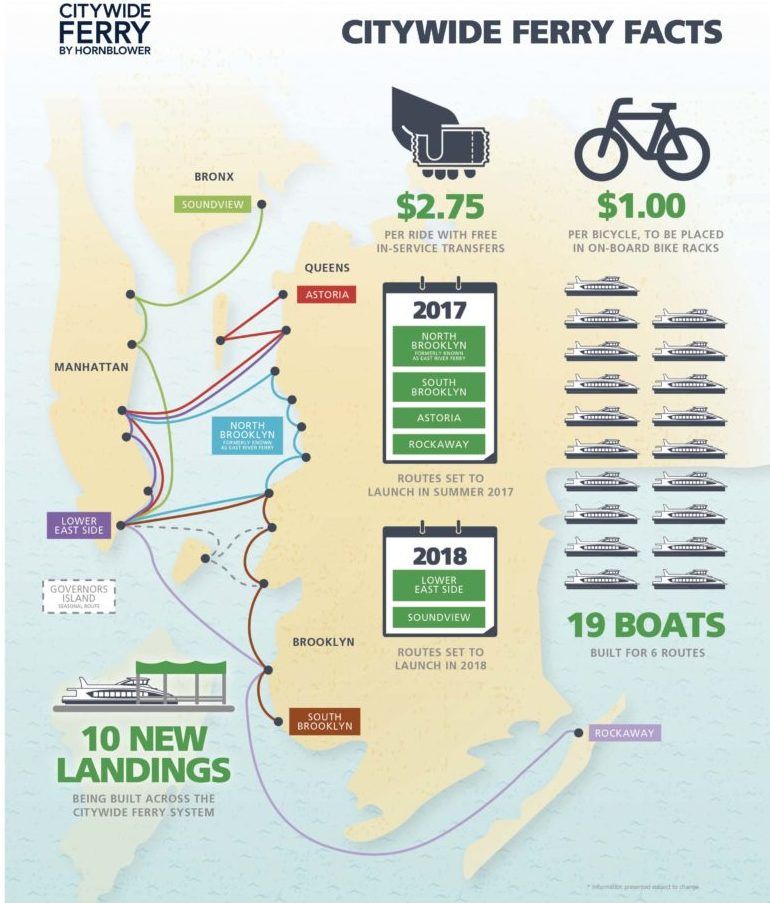Vintage 1970s Photos Show Lost Sites of NYC's Lower East Side
A quest to find his grandmother's birthplace led Richard Marc Sakols on a mission to capture his changing neighborhood on film.


The Citywide Ferry system by Hornblower, to be launched this summer, is the latest evolution in New York City’s 200-year history of water mass transit. In 1814, Robert Fulton introduced steam-powered vessels in New York Harbor, enabling settlement across from Manhattan. Then, as well as now, the city sought a way to link emerging neighborhoods to vital job centers. The answer was a robust ferry system centered on the East River. By the 1850s, a dozen routes connected Brooklyn and Manhattan, with 40 million annual crossings. Most were controlled by the Union Ferry Company, then the largest operator in the world. New York, with its great port and harbor, became a powerhouse of transportation, industry, and development.
As the city grew up and outward, ferries began to fade from the map. Upland communities and business districts demanded connections that ferries couldn’t provide. Massive bridges and tunnels, built along old ferry routes, diverted density from the waterfront. With new infrastructure connecting the unified city, the ferry network succumbed to fragmentation. In 1905, after a major accident, the city took over the Staten Island Ferry, from a private operator. 1924 marked the termination of the Fulton Ferry, the oldest link between the boroughs. By the 1960s, ferryboats had all but disappeared from our waters.

Now, fifty years later, New York has come full circle. Decades of waterfront revitalization efforts have renewed the East River shoreline – and public interest in ferries. In 2011, the East River Ferry joined Brooklyn, Queens and Manhattan in an affordable ferry network, and a new paradigm for water mass transit. New Yorkers exceeded all ridership expectations, sending a loud and clear signal for ferry service. Once viewed as obsolete, ferries have become a nimble and valued transit mode, with reduced capital costs and implementation time. The result is Citywide Ferry by Hornblower, the first comprehensive, inter-borough ferry network in nearly one hundred years.

Horizon Shipyard. Image courtesy Citywide Ferry
Citywide Ferry is a 21st century model of service that integrates key lessons from the last 200 years. As in the past, New York’s ferry system must balance investment, ridership and affordability. Today, this takes a city-operator agreement that shares risks and resources for success and longevity. With a $2.75 system fare and free transfers between routes, Citywide Ferry preserves transportation equity for New Yorkers, and proves that ferries can be affordable to all. Finally, coordinated planning will help ensure that future ferries won’t compete with buses and subways. By supplementing surface transit, strengthening upland connections and facilitating journey planning, Citywide Ferry by Hornblower is anticipated to serve more than 500,000 riders within a half-mile of its landing sites. New Yorkers can take advantage of this highly anticipated service starting summer 2017.
Here are some fun facts you might not know about the new Citywide Ferry system:
Take a look at the what the Citywide Ferry vessels will look like and what the new ferry landings will be like. The author Inna Guzenfeld is a Waterfront and Citywide Ferry Advocate.
Subscribe to our newsletter